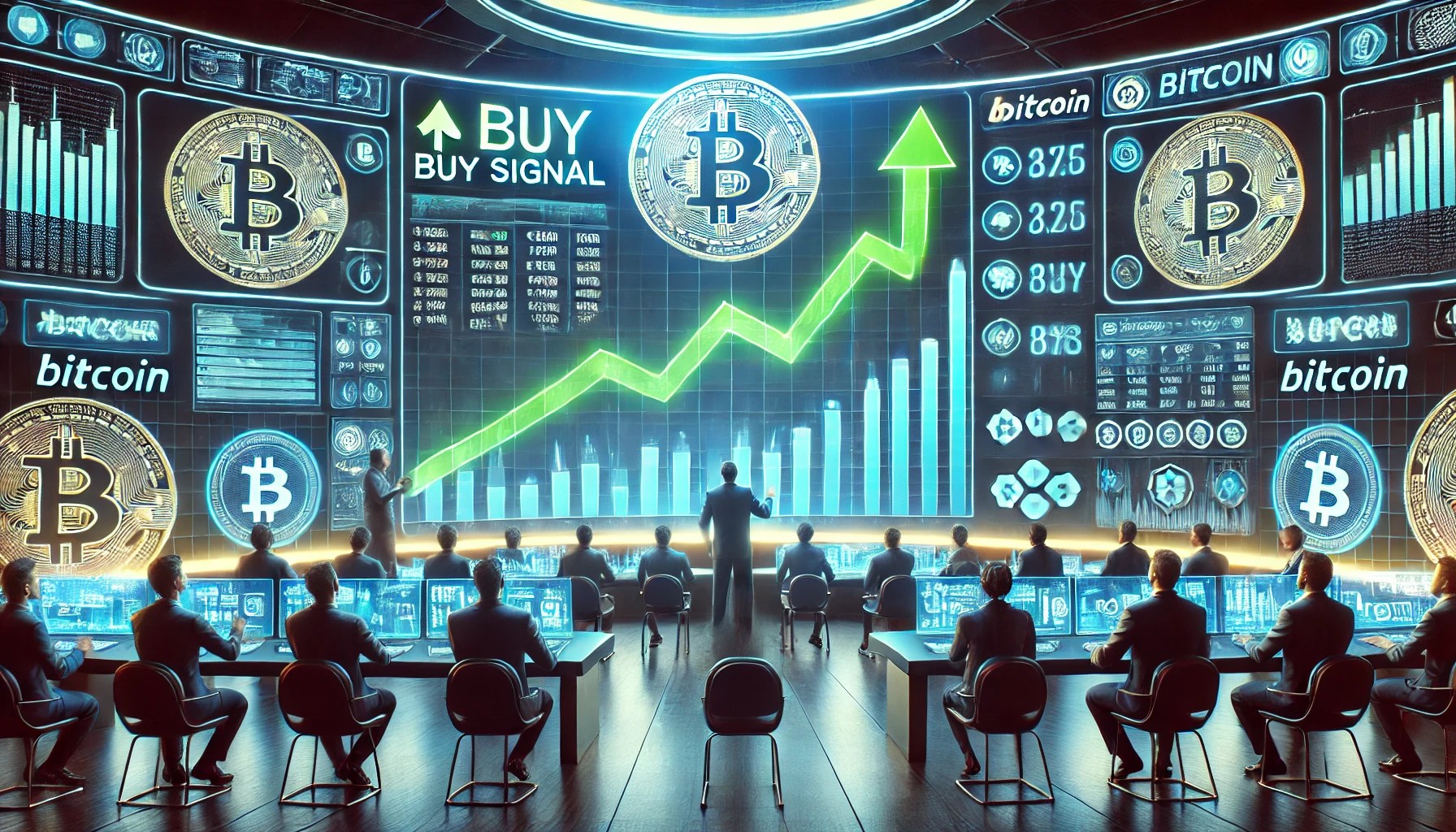On-chain data suggests that Bitcoin miners would be under pressure right now as the price is quite close to the baseline for these chain validators.

Bitcoin price has performed well over the past couple of weeks, finally managing to break above the key resistance at $60,000. However, the flagship digital asset seems to have stalled at this level, and on-chain data suggests that Bitcoin miners could be feeling the heat right now.
Bitcoin price has finally managed to break the key resistance at the $60,000 level. However, the flagship digital asset has stalled at this level, and on-chain data suggests that Bitcoin miners can already feel the pressure.
Bitcoin miner production cost now at $57,200 as per Difficulty Regression Model
In a new analysis post on X, analyst Checkmate covered the current state of Bitcoin miners. The analyst used the Difficulty Regression Model, which attempts to gauge the average production cost of these chain validators to mine a single asset token.
This model uses the network's difficulty, which essentially measures how hard the miners would find it to be able to discover new blocks. The BTC blockchain adjusts the difficulty automatically once every two weeks based on how quickly the miners have been able to perform their tasks since the last adjustment.
This concept is built into BTC's code so that the block production rate (the amount of time it takes for the miners to find the next block) stays around a constant value.
But why did Satoshi feel the need to do this? It's because miners get block subsidies as a reward for solving blocks, which also happens to be the only way to mint more of the asset.
As the total computing power of the miners increases (what's also known as the hashrate), they naturally become better at their task and produce blocks faster. If this growth is left unchecked, these validators will keep pumping out blocks faster and faster, leading to the asset's supply exploding.
Supply-demand dynamics dictate that such an explosion would tank the asset's value. The Bitcoin creator realized this and programmed the Difficulty feature into the blockchain.
Now, whenever miners increase their hashrate, the network also increases the difficulty by about the same proportion in the next adjustment, thus counteracting the speed increase miners could leverage the extra power for.
Coming back to the Difficulty Regression Model, this indicator uses the Difficulty to calculate the production cost of BTC since it essentially encapsulates everything related to the miners due to its relation to the hashrate.
Here is how the average cost of producing 1 BTC has changed over the past few years, according to this model.
In a new analysis post on X, analyst Checkmate covered the current state of Bitcoin miners. The analyst pointed to a difficulty regression model that attempts to measure the average cost of generating these on-chain validators to mine a single asset token.
This model uses network difficulty, which basically measures how hard miners work to find new blocks. The BTC blockchain automatically adjusts the difficulty once every two weeks based on which miners have been able to complete their tasks since the last adjustment.
This concept is built into the BTC code so that the block generation rate (the amount of time it takes miners to find the next block) stays around a constant value.
But why did Satoshi feel the need to do this? This is because miners receive block subsidies as a reward for solving blocks, which happens to be the only way to multiply assets.As miners' total computing power (also known as hash rate) increases, they naturally become better at their work and generate blocks faster. If this growth goes unchecked, these validators will pump blocks faster and faster, eventually leading to an asset supply explosion.
Supply and demand dynamics dictate that such an explosion lowers asset value. The creator of Bitcoin realized this and programmed a hard feature into the blockchain.
Now, whenever the miners increase their hash rate, the network will increase the difficulty by almost the same proportion in the next adjustment, thus speeding up the miners and the miners can use the extra power for it.
Going back to the difficulty regression model, this indicator uses difficulty to calculate the cost of producing BTC because it basically includes everything that concerns miners as it relates to the hash rate.
Here is how to change
The above is the detailed content of Bitcoin Miners Under Pressure as BTC Price Hovers Close to Production Cost Baseline. For more information, please follow other related articles on the PHP Chinese website!
 Senators Lummis and Scott Promise Pro-Bitcoin Legislation if Republicans Win the Majority in the Upcoming ElectionsJul 27, 2024 pm 12:58 PM
Senators Lummis and Scott Promise Pro-Bitcoin Legislation if Republicans Win the Majority in the Upcoming ElectionsJul 27, 2024 pm 12:58 PMSenator Cynthia Lummis took the stage to speak at the Bitcoin 2024 conference along with Senator Tim Scott, on Friday, discussing cryptocurrency and their vision for its role in the U.S. financial system.
 Bitcoin (BTC) Exchange Netflow Has Just Taken to Positive Values, Here's What It MeansJul 27, 2024 am 12:07 AM
Bitcoin (BTC) Exchange Netflow Has Just Taken to Positive Values, Here's What It MeansJul 27, 2024 am 12:07 AMOn-chain data shows the Binance exchange has received large net Bitcoin inflows during the past day, indicating that BTC's decline may extend further.
 Hackers recover $3 million in bitcoin from software wallet locked for over a decadeJun 14, 2024 am 09:57 AM
Hackers recover $3 million in bitcoin from software wallet locked for over a decadeJun 14, 2024 am 09:57 AMJoeGrand-anethicalhackerandYouTuberwhoiswidelyknownforhisprojectsinvolvingcryptowallets,hassuccessfullyrecoveredalife-changingamountofbitcoin,presentlyvaluednorthof$3millionfromasoftwarewalletthathasbeenlockedformo
 Bitcoin (BTC) – America’s Key To Economic Supremacy?Jul 26, 2024 pm 09:15 PM
Bitcoin (BTC) – America’s Key To Economic Supremacy?Jul 26, 2024 pm 09:15 PMIn the ongoing global economic and geopolitical rivalry, the United States may have a powerful new weapon – Bitcoin (BTC). That is the argument made by Sam Lyman
 US Stock Market Peak Warning May Also Impact Bitcoin (BTC) MarketJul 27, 2024 am 06:35 AM
US Stock Market Peak Warning May Also Impact Bitcoin (BTC) MarketJul 27, 2024 am 06:35 AMFinancial experts are warning of an impending peak in US stocks. This may also lead Bitcoin to rise. According to Arthur Budaghyan, an analyst at BCA Research, the US stock market
 Bitcoin Holders Can Now Purchase European Union Citizenship, Combining Cryptocurrency and Immigration PolicyJul 25, 2024 pm 02:53 PM
Bitcoin Holders Can Now Purchase European Union Citizenship, Combining Cryptocurrency and Immigration PolicyJul 25, 2024 pm 02:53 PMPowered by the Unbound Fund, this initiative uses Bitcoin as a key to open up Portuguese citizenship via the country's golden visa program.
 Bitcoin vs. Gold vs. S&P 500: Which Is the Best Investment in the Current Market?Jul 27, 2024 am 07:11 AM
Bitcoin vs. Gold vs. S&P 500: Which Is the Best Investment in the Current Market?Jul 27, 2024 am 07:11 AMCryptocurrencies, commodities, and stocks are among the most popular risk assets for investment and trade, also leading finance indicators.
 Bitcoin (BTC) Witnesses “Rare” Buy Signal, Could Enjoy a Massive Rally to $130,000Jul 26, 2024 am 11:26 AM
Bitcoin (BTC) Witnesses “Rare” Buy Signal, Could Enjoy a Massive Rally to $130,000Jul 26, 2024 am 11:26 AMCrypto analyst Mikybull Crypto has revealed the return of a technical indicator that represents a buy signal for Bitcoin. Based on his predictions, the

Hot AI Tools

Undresser.AI Undress
AI-powered app for creating realistic nude photos

AI Clothes Remover
Online AI tool for removing clothes from photos.

Undress AI Tool
Undress images for free

Clothoff.io
AI clothes remover

AI Hentai Generator
Generate AI Hentai for free.

Hot Article

Hot Tools

SublimeText3 Mac version
God-level code editing software (SublimeText3)

SAP NetWeaver Server Adapter for Eclipse
Integrate Eclipse with SAP NetWeaver application server.

Atom editor mac version download
The most popular open source editor

mPDF
mPDF is a PHP library that can generate PDF files from UTF-8 encoded HTML. The original author, Ian Back, wrote mPDF to output PDF files "on the fly" from his website and handle different languages. It is slower than original scripts like HTML2FPDF and produces larger files when using Unicode fonts, but supports CSS styles etc. and has a lot of enhancements. Supports almost all languages, including RTL (Arabic and Hebrew) and CJK (Chinese, Japanese and Korean). Supports nested block-level elements (such as P, DIV),

SecLists
SecLists is the ultimate security tester's companion. It is a collection of various types of lists that are frequently used during security assessments, all in one place. SecLists helps make security testing more efficient and productive by conveniently providing all the lists a security tester might need. List types include usernames, passwords, URLs, fuzzing payloads, sensitive data patterns, web shells, and more. The tester can simply pull this repository onto a new test machine and he will have access to every type of list he needs.






